Unmistakable: How I Understand Saori Weaving
May 16, 2016
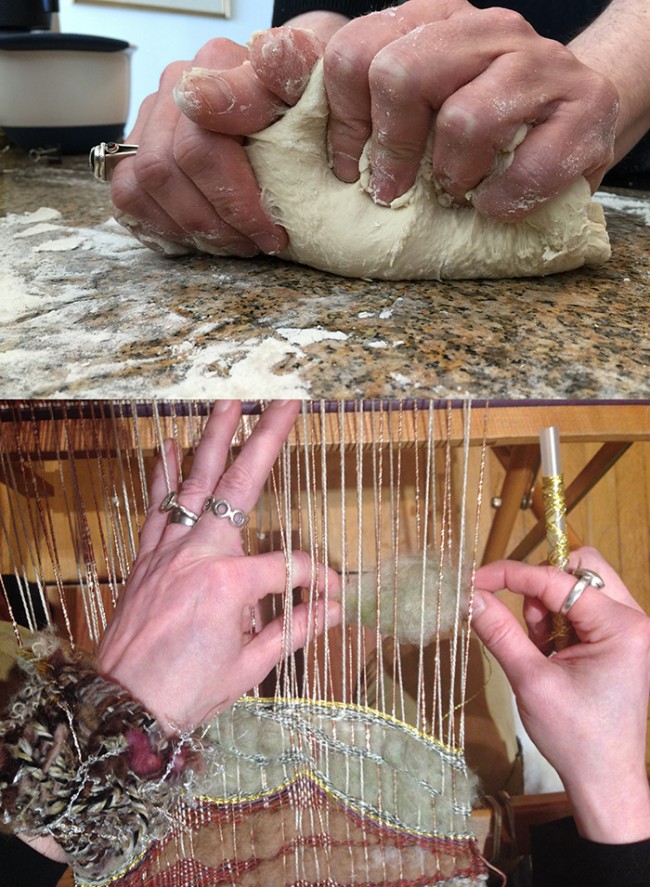 For years my canvas was digital. I made a video game about gender politics and an interactive website expressing passion, for example.
For years my canvas was digital. I made a video game about gender politics and an interactive website expressing passion, for example.
Programming demanded that everything had its place. If I wrote a program to act a certain way, it had to work. There was no half-way. Yes or no. 0 or 1.
But though the art was only inches from your face, you could never physically touch it.
Then, I – and my computer – crashed.
I wanted to improvise. I wanted to feel without obstacles. I wanted to learn to weave.
I found Saori, a Japanese philosophy conceived by weaver Misao Jo (in the 1970s) as an individualistic, anti-mechanical and easily accessible approach.
Saori is about self-expression. No rules. You weave who you are. Every work becomes an improvisation in awkward beauty: clumpy fabric, rough and smooth textures, ragged edges. In the book SAORI: Self-discovery through Free Weaving (Osaka, 2001) by Misao Jo and Kenzo Jo, Misao wrote (and I’ll continue to quote her below):
Weaving as a means to discover our true selves and to express our individual creativity. (p. 15)
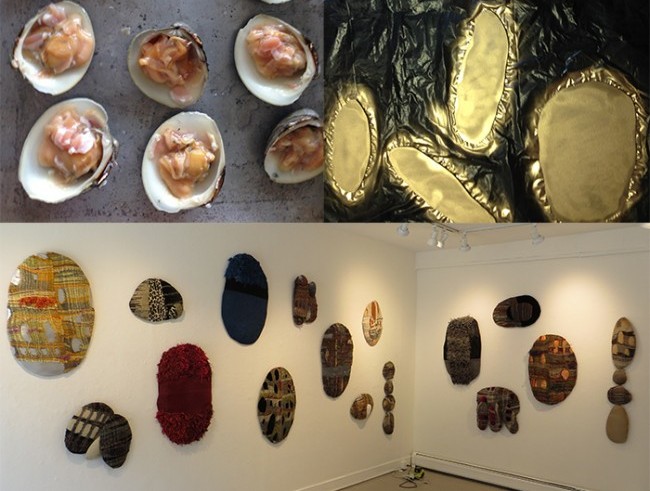
Because a Saori loom has only 2 heddles, I can focus on aesthetic decisions instead of keeping track of patterns. My hands act as a shuttle, guiding the bobbin through the shed. My fingers beat the weft. The fabric becomes organic, fluid, personal. The weft escapes from my fingers with free will. I can’t replicate a straight line. Luckily, I don’t want to.
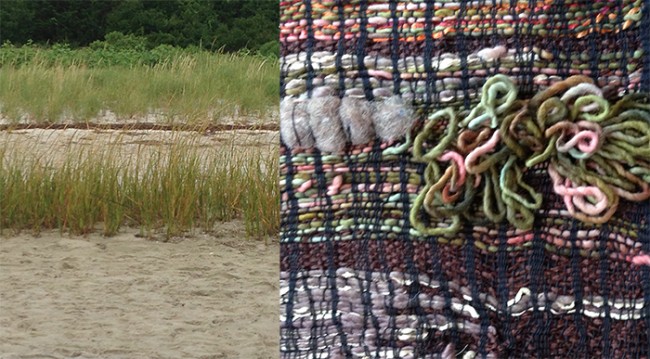
When I began Saori weaving, its principle of “there are no mistakes” was so different from the limits of digital design. But if there are no rules, no mistakes, how do you know what not to do? If everything is Saori, did I start doing Saori that day – or have I always been doing it? Is awareness the only indicator? I understood the intention, but I needed to create my own mantra of “no mistakes.”
Saori weaving places importance on thinking rather than just on technique. Technique is the ability to copy a sample faithfully just as requested, and unlike thinking it allows no room for creation. Creation requires thinking. (p. 19)
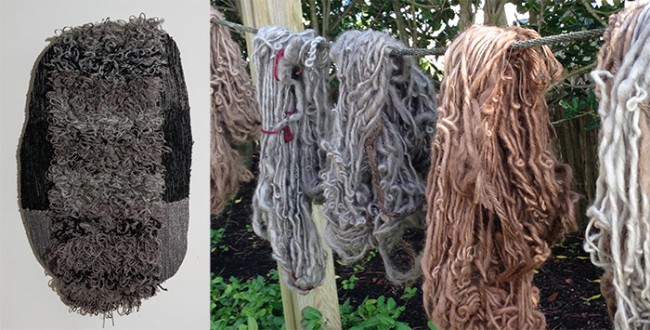
At first, I peeked at other weavers. I would like to say it was from curiosity, but it was competition. When I tried to copy another weaver’s work, I failed miserably. That was a mistake – not very Saori! I had to find my own way.
For Saori weavers the finished cloth should represent their individuality, attitude toward life, personal history, capabilities . . . (p. 29)

I started weaving memoirs of the untold secrets of my life. Who I had slept with, the thoughts in my head, the clothing I wore, how it felt when men looked at me. Saori’s ease of expression is so direct that it makes inspiration almost instantly material.
After I weave I see patterns. Yet I don’t always know what my next choice will be.
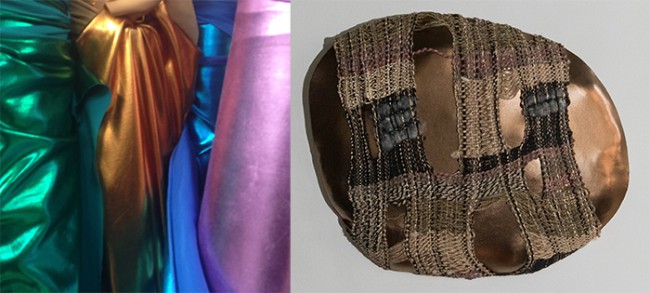
Mistakes can be priceless. Once I was weaving green, yellow, orange, and turquoise. I added a large swatch of black. Disastrous. I could hear my painting teacher crying. I wanted to take it out, but it was part of me. Instead I carried the black through the rest of the project. It became a successful design element that I could not have planned.
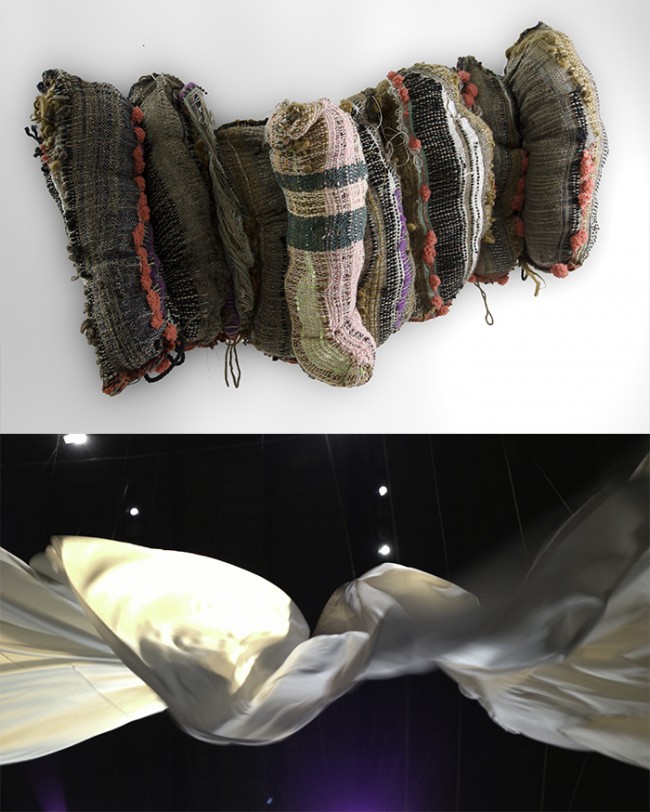
When I was studying (and, later, teaching) art, concept came first. “What are you trying to do?” “How are you going to do it?” “What technique?”
When I came to Saori, no one would teach me anything beyond basic technique. It drove me crazy. Tell me what to do!
Do not teach, try to help develop individual creativity. (p. 14)
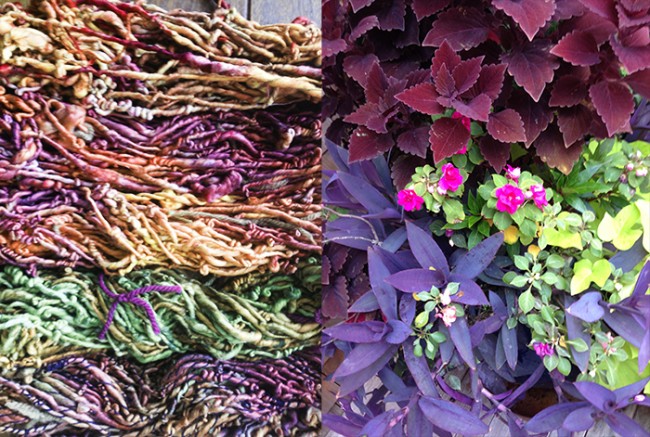
I make decisions to not fix mistakes. A thread breaks? Leave it hanging. Run out of that blue? So substitute another blue that clashes with the first. Don’t finish an embroidery design: leave it as if you didn’t want to thread the needle again. Let the weights of the fiber mismatch so it doesn’t drape consistently. Throw it in boiling water and watch it shrink and felt. I am not a machine. My work certainly doesn’t look machine-made.
I swore that I would produce work that no machine could match. (p. 17)

I’ve always said that you will see me when you see my work.
Misao Jo had already said: Saori weaving is not merely the act of weaving a piece of cloth; it is an attempt to identify our true selves. (p. 14)
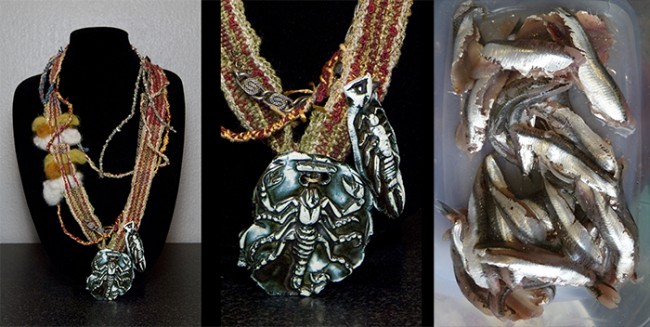
For more information about SAORI weaving, visit:
Loop of the Loom, New York City / Saori Nomori, Osaka, Japan / Saori Hiroba, Osaka, Japan
See Juliet Martin’s First Person story in Spring 2016 issue of Surface Design Journal, the quarterly textile arts magazine of Surface Design Association.
_____________________________________________________
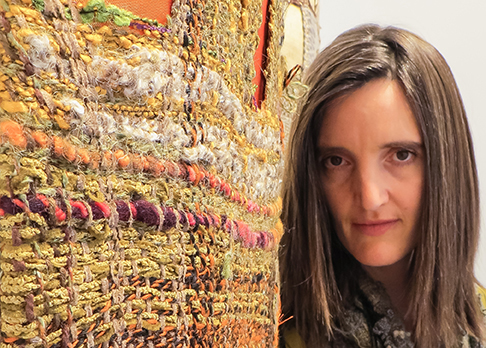 Juliet Martin is a New York City-based fiber artist who sculpts her handwoven fabric into autobiographical works.
Juliet Martin is a New York City-based fiber artist who sculpts her handwoven fabric into autobiographical works.
She has a BA in visual art from Brown University, an MFA in computer art from School of Visual Arts and is a member the Saori Leadership Committee.
To read more about her work, visit amazon.com to preview or order her book I Would Wear That: A Self-Absorbed Study in Non-Functional Weaving.
Read a short review of her book featured on SDA NewsBlog‘s best textile arts books of 2015 here.
View her website at julietmartin.com


2 Comments
Janie says
February 26, 2018 at 4:12 pm
Juliet, note the difference between heddles and shafts or harnesses on a loom. Saori requires more than two warp threads. Elementary!
Una sassa says
September 12, 2020 at 4:46 am
I enjoyed reading this so much . Thank you .
Related Blog Articles
Creative Process
“Fringe: On the Edge of Fiber” — Out Now!
Creative Process
Friday Fibers Roundup: Craft & Color
Creative Process
“Standing Tall: A Heart-FELT Reflection” by Martien van Zuilen